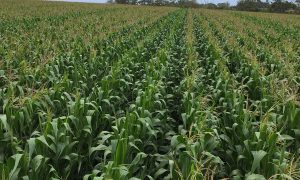The first gasoline powered tractor was created in 1892, by John Froelich. Henry Ford followed with mass produced and lightweight tractor to meet the needs of smallholder farmers. Diesel tractors are an important mode of transport in many rural areas. They are equally a critical component in farming operations.
According to tractor market analysis and forecast. Tractors sales in 2023 were 8 300 units. A 9% decrease from 2022. A total of 9181 units were sold in 2022. The projected growth is 11 150 by 2028. On the other hand, combine harvest sales amounted to 505 units. An increase of 35% year-on-year. Sales of 373 units of combine harvest were recorded in 2022. The history of battery powered vehicles in the world dates to the 1820s, whereas internal combustion engines were first developed in 1886.
It’s anticipated that electric tractors would make significant inroads into the agricultural sector in South Africa, driven by advancements in technology and the increasing emphasis on sustainability. The adoption of electric tractors in South Africa is likely to be influenced by the need for sustainable agricultural practices and the potential cost savings from reduced fuel and maintenance expenses. While the initial cost of these tractors may be high, the long-term benefits, including lower operating costs and reduced environmental impact, make them an attractive option for futuristic farmers.
Reports by the International Energy Agency (IEA) indicate that about 24% of global anthropogenic greenhouse gas (GHG) emissions are from agriculture. Notable portion coming from agricultural practices and machinery. Tractor emissions significantly contribute to climate change due to the GHG emissions released during various farming operations. These emissions primarily include nitrous oxide (N₂O), methane (CH₄), and carbon dioxide (CO₂) among those contributing to substantial global warming.
The Global community through the United Nations Framework Convention on Climate Change (UNFCCC) formulated the Paris Agreement in 2015, to respond to the global challenge on climate change. Countries pledge their climate change adaptation and mitigation ambitions through nationally determined contributions reporting system to the UNFCCC. The Republic of South Africa is indeed the signatory to the 2016 Paris Agreement on Climate Change.
Mitigation of GHG emissions from transport sector is expected to contribute towards the achievement of the Paris Agreement.
The automotive sector is significant to the mitigation of GHG emissions and attainment of the targets by the Republic contained in Paris Agreement. The electric vehicles are considered mitigation to the increasing GHG emissions through pollution caused by exhaust fumes. Electric vehicles were first reported in South Africa in the 1970s. Despite early invention, market traction of electric vehicles was overtaken by mass production of combustion engines during second industrial revolution. The mass production of vehicles powered by fossil fuels for over a century entails the industry is a significant contributor to the economy. Reports by Statistics South Africa (StatSA, 2023) depicts the automotive industry contributed 4.3% to the Gross Domestic Product (GDP). Whilst exports were recorded at 18.1% of total exports. Furthermore, about 110 000 people were employed in the industry.
Electric tractors are a new and innovative technology that may offer several benefits to farmers and the environment. Electric tractors are likely to improve the efficiency and productivity of farming operations. Tractor manufacturers are integrating advanced technologies to improve performance and efficiency through digital connectivity GPS guiding systems, precision farming technologies, connection to cloud computing and artificial intelligence. Data from the recently launched electric tractor in Mbombela indicates a tractor operating on 140kwh battery pack is likely to reduce the operating cost from R3k per day to R350 which makes a significant variation in the operating costs. Data harvesting and validation by the Agricultural Research Council (ARC) and the Council for Science and Industrial Research (CSIR), is critically geared to improve assimilation and adoption rates.
Electric tractors may not be the panacea to all challenges of operational inefficiencies and mitigation of GHG emissions. Electric tractors may also face challenges and limitations at the level of adoption by farmers, due to low adoption rate caused by high initial cost of purchase. Innovation is accompanied by cost to commercialise. Secondly, it could be poor traction due to limited availability. Thirdly, the higher cost of repairs due to unavailability of spare parts. Fourthly, the fear of the unknown due to low awareness amongst farmers. The fifth challenge could be to acute lack of charging infrastructure in rural areas. Also, it could be social and cultural barriers as some farmers may prefer traditional and conventional methods of farming. Thus, low adoption rates and inertia to innovation. Lastly it could be due to the ease of driving and flexibility with the required load – a major factor for consideration on the type of electric tractor to source. Availability of electric tractors that are fit-for-purpose may likely be a challenge to farmers alike.
At the level of climate change, the jury is still out regarding the environmental sustainability of the battery disposal, ex-post lifespan. While emissions from electric vehicles may be lower than vehicles using fossil fuel. The batteries used by electric vehicles are non-recyclable, at least for now. Furthermore, the batteries are manufactured using mined minerals such as cobalt and lithium. Additionally, vehicle chargers are reliant on the availability of coal powered energy supply by ESKOM. Batteries are generally charged via coal powered electricity. Intermittent power supply constraints in the Republic are not conducive to the rapid adoption of electric tractors as charging might burden the already constraint energy system.
Overall, the introduction of electric tractors by major manufacturers represent a significant step towards modernization of agriculture in South Africa. Further, aligning with global trends on sustainability and technological advancement. Momentum for a future switch from diesel to hydrogen for powering tractors and other agricultural machines is gathering pace with the announcement of further H2-ready engines from leading manufacturers.
According to Department of Science and Innovation, the Hydrogen Society Roadmap (HSRM) for South Africa will serve as a national coordinating framework to facilitate the integration of hydrogen-related technologies in various sectors of the South African economy geared to stimulate economic recovery. In conclusion, the dawn of electric tractors brings with it opportunities and fears. Emissions from diesel engines tractors contribute to climate change by releasing significant amounts of N₂O, CH₄ and CO₂. Electric tractors present a promising solution to mitigate these emissions. The reduction in GHG emissions can be even more significant should the electricity used to charge batteries of tractors be generated from renewable sources. Transition to electric tractors should help reduce GHG emissions and negative impact on global warming.




















